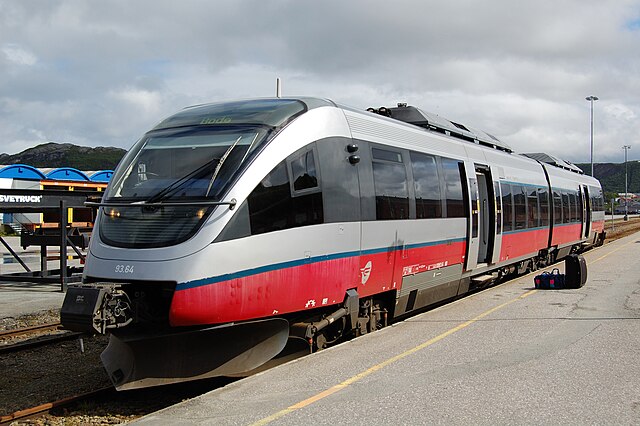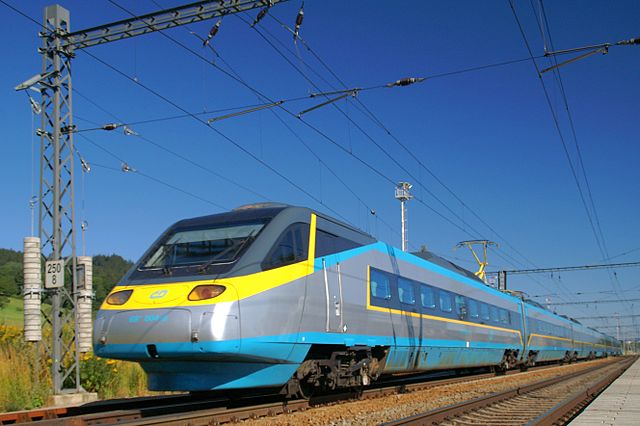Class 93 is a tilting two-carriage diesel multiple unit used by SJ Norge for passenger trains on non-electrified stretches of the Norwegian railway network. Used on the Nordland Line, the Røros Line and the Rauma Line, they were purchased to replace the aging Di 3 locomotive-hauled trains. The Class 93 was produced by Bombardier, and is part of the Talent family. Fifteen units were delivered between 2000 and 2002.
Class 93 at Bodø Station
A Class 93 unit on the Nordland Line
Twin Class 93 unit at Åndalsnes Station on the Rauma Line
93-13 (BCM 93.63) of SJ Norge
A tilting train is a train that has a mechanism enabling increased speed on regular rail tracks. As a train rounds a curve at speed, objects inside the train experience centrifugal force. This can cause packages to slide about or seated passengers to feel squashed by the outboard armrest, and standing passengers to lose their balance, or in such excessive speeds, could even cause the train to derail. Tilting trains are designed to counteract this by tilting the carriages towards the inside of the curve, thus compensating for the g-force. The train may be constructed such that inertial forces cause the tilting, or it may have a computer-controlled powered mechanism.
A Japanese KiHa 283 series tilting DMU, which can tilt up to 8° (6° in normal operation)
A ČD Class 680 Pendolino train in July 2006
A Swiss SBB RABDe 500 on the Hauenstein railway line in May 2007
An ICE T (DB class 411) leaves a curve, showing cars tilted to different degrees.








